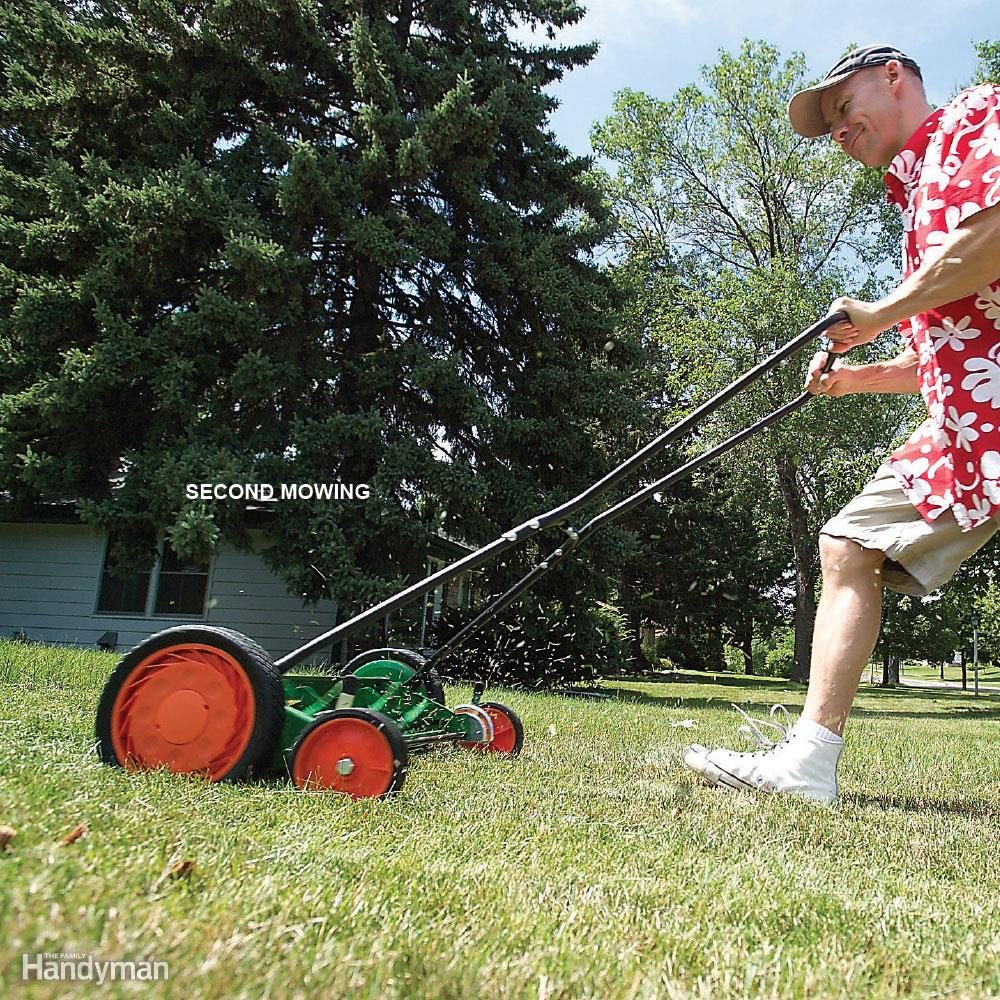
Get Them Before They Sprout
The best weapon you have against this annual weed is crabgrass preemergence herbicide (also called crabgrass preventer). You apply this product in the spring before the crabgrass seed sprouts. The most cost-effective way to apply a preemergent herbicide is to use a fertilizer with crabgrass preventer added to it. Apply it when you would normally apply your first application of fertilizer, and do it just before it rains to work both the fertilizer and the herbicide into the soil. The fertilizer will help thicken the turf. Thicker turf helps to squeeze out crabgrass plants missed by the herbicide. Common brands include Ferti- Lome’s Weed-Out, Sta-Green’s Crab-Ex Plus and Scotts Turf Builder.
So how do you select the exact instant for application? Pay attention to your grass. Fill up the spreader with preemergence granules between the second and third mowings of the year. The window is short, only about a week and a half, when the soil hits the ideal temperature, about 52 degrees F. You can also buy an inexpensive soil thermometer (sold at garden centers) to monitor soil temperature. If you’re going to err on timing your crabgrass preemergence application, err on the early side. While you’ll lose some effectiveness, you’ll still probably kill lots of crabgrass. If you go late, you’re likely to miss early sprouts.
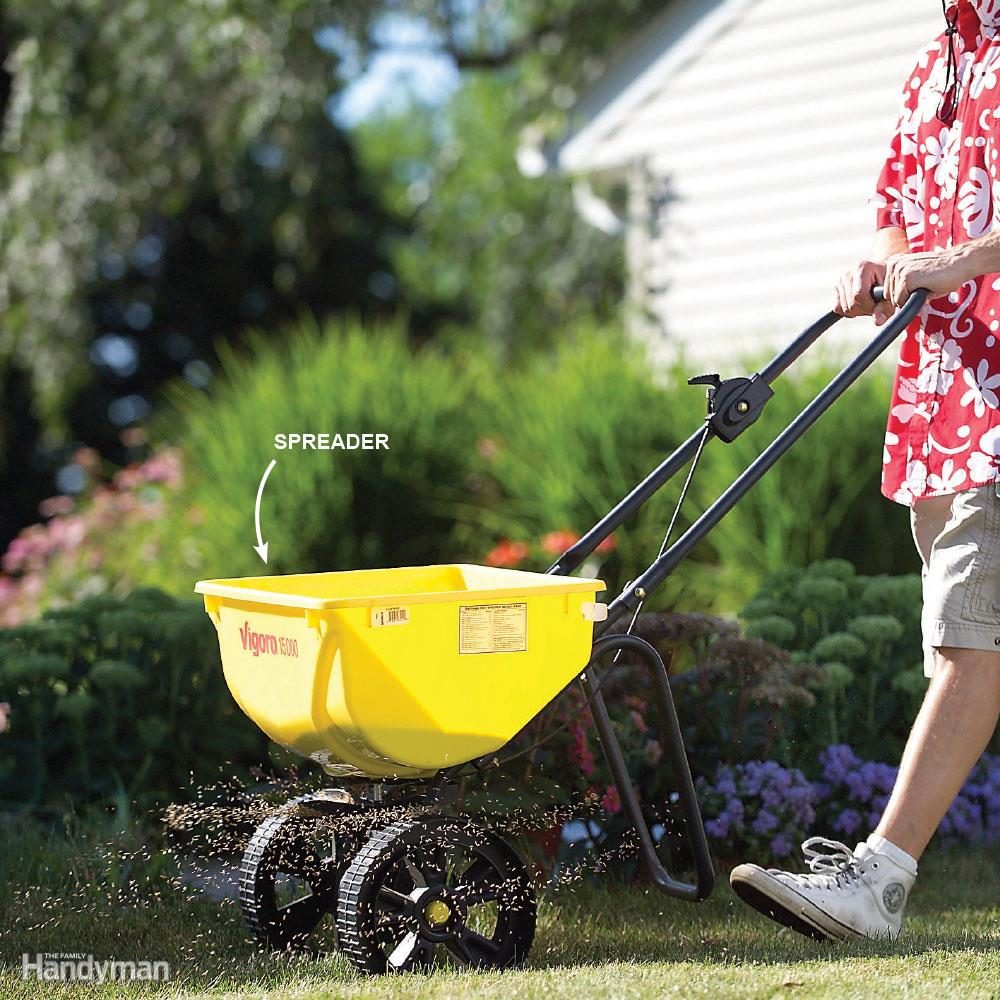
Application
Apply crabgrass preemergence granules with a spreader, especially around driveways and walks and also alongside the neighbor's crabgrass-infested yard.
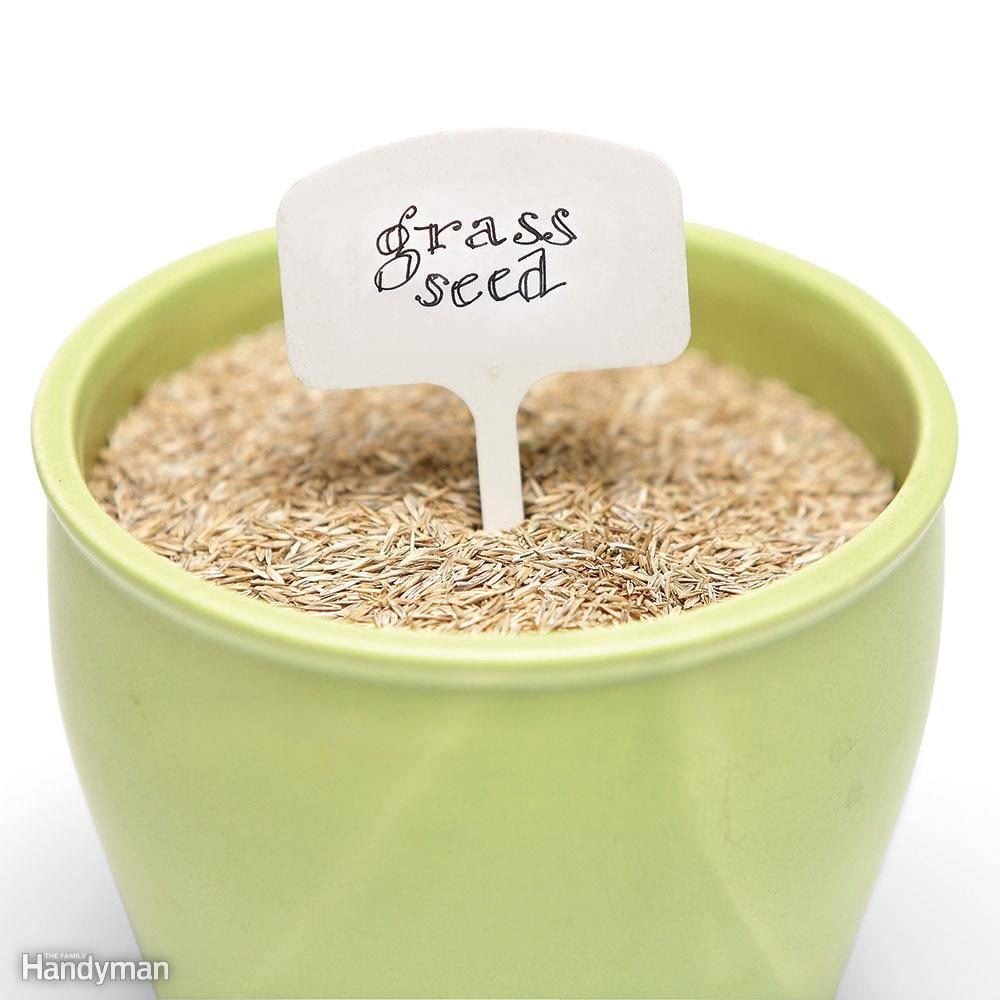
Reseed or Kill - Not Both
Check the Key Ingredient There are many different trade names for 'weed and feed' products on the market. Chemical names can be confusing. Look carefully at the ingredients panel for dithiopyr, prodiamine or pendimethalin. These active ingredients, which are sold under various brand names such as Dimension, Barricade and Scotts Halts, will kill crabgrass in most areas of the country and in many different kinds of turf. However, it's always wise to ask your local extension service which chemicals are best for your area and turf species.
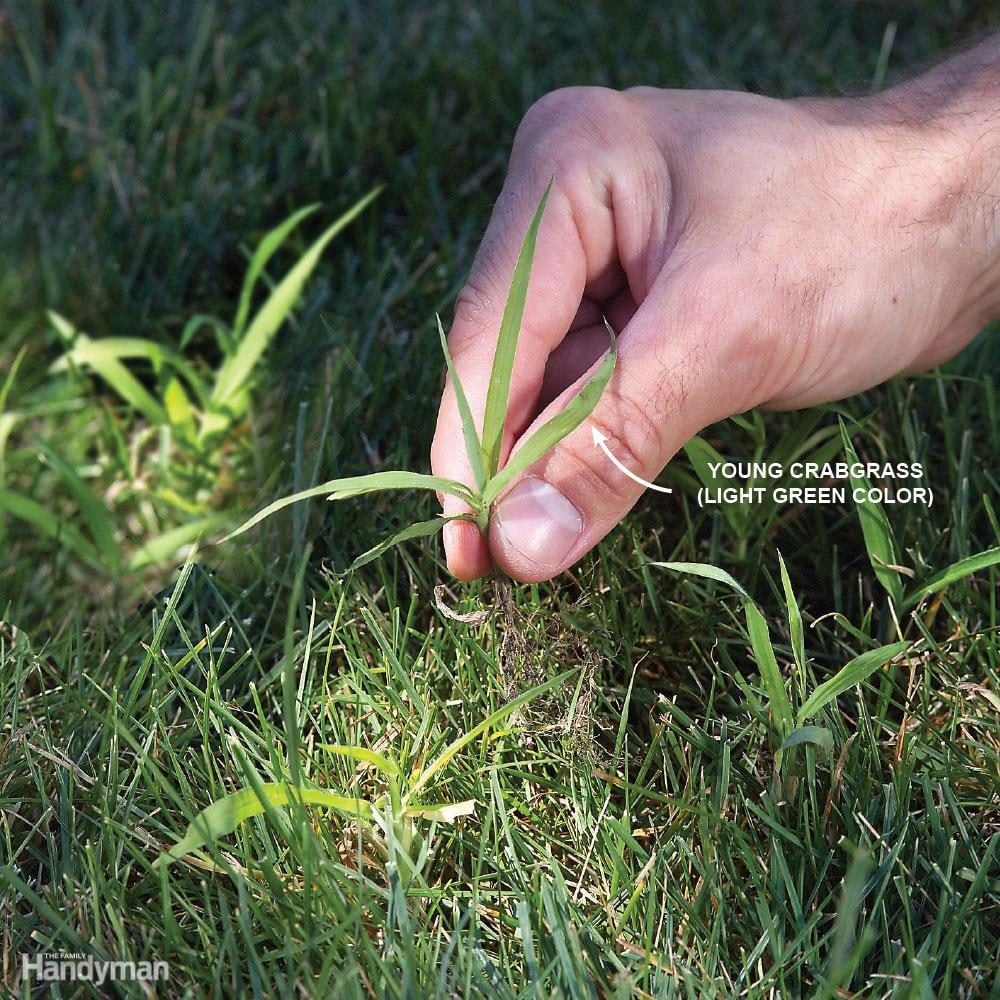
Yank 'em while they're young!
Pull out crabgrass as soon as you spot it. Young plants leave only a small hole in your turf, which desirable grass types will quickly fill.
OK, your lawn has been growing for a couple of months and you notice light green blades thickening up your Kentucky Blue. Before you think your lawn is having an exceptional season, think again: It's likely to be young crabgrass.
Pulling, at this early stage, is a surprisingly effective way to get rid of crabgrass. But if the weed has pushed up three or four rows of leaves, inspect it carefully before you snatch it. If you spot a slender, green seed head that is still closed and folded up against the leaves of the plant, go ahead and pull it, too. However, after the seed head tines have spread out like a fork, leave it alone. Otherwise you'll scatter scads of seeds right over that nice big hole you've just created by removing the mature weed. You might as well be trying to cultivate new crabgrass!
Come fall, seed bare and patchy areas. With good lawn care practices, you'll soon crowd out those fallen crabgrass seeds.
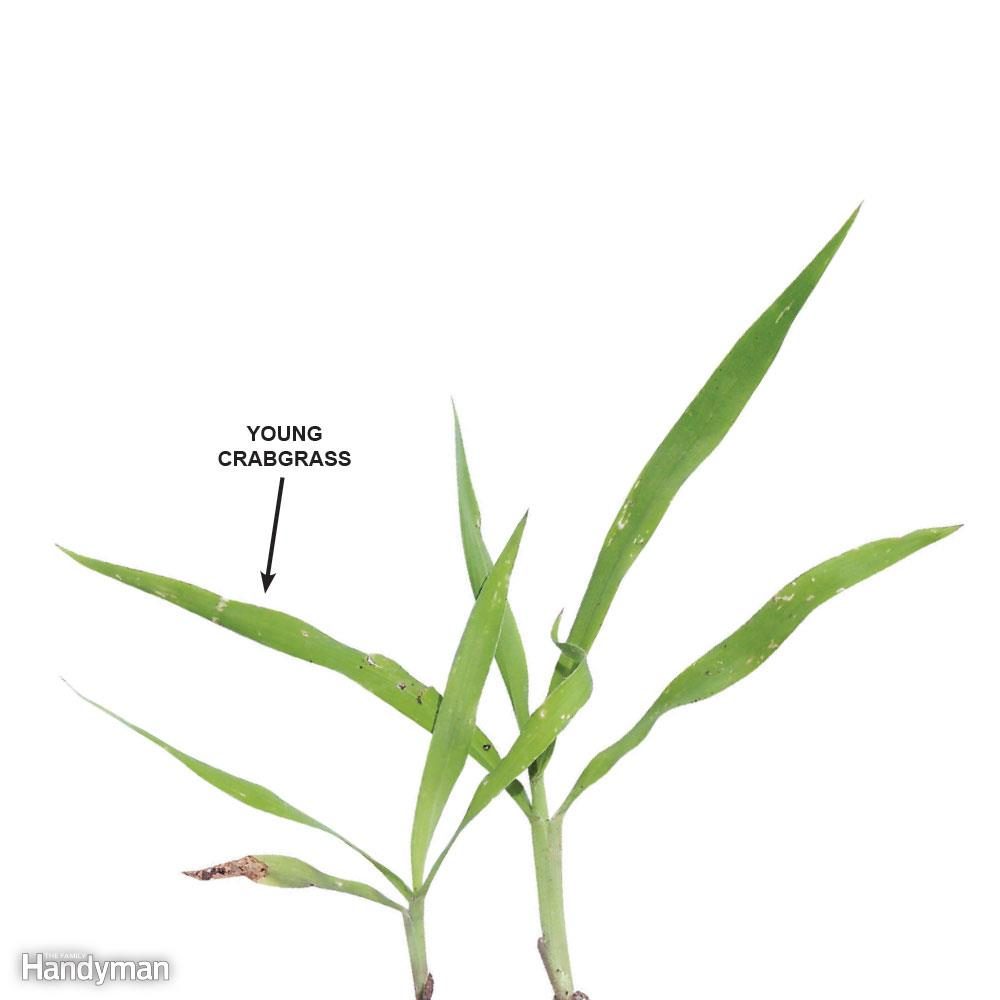
What to look for
Young crabgrass plants perfect for pulling have two to four sets of leaves but no splayed seed heads.
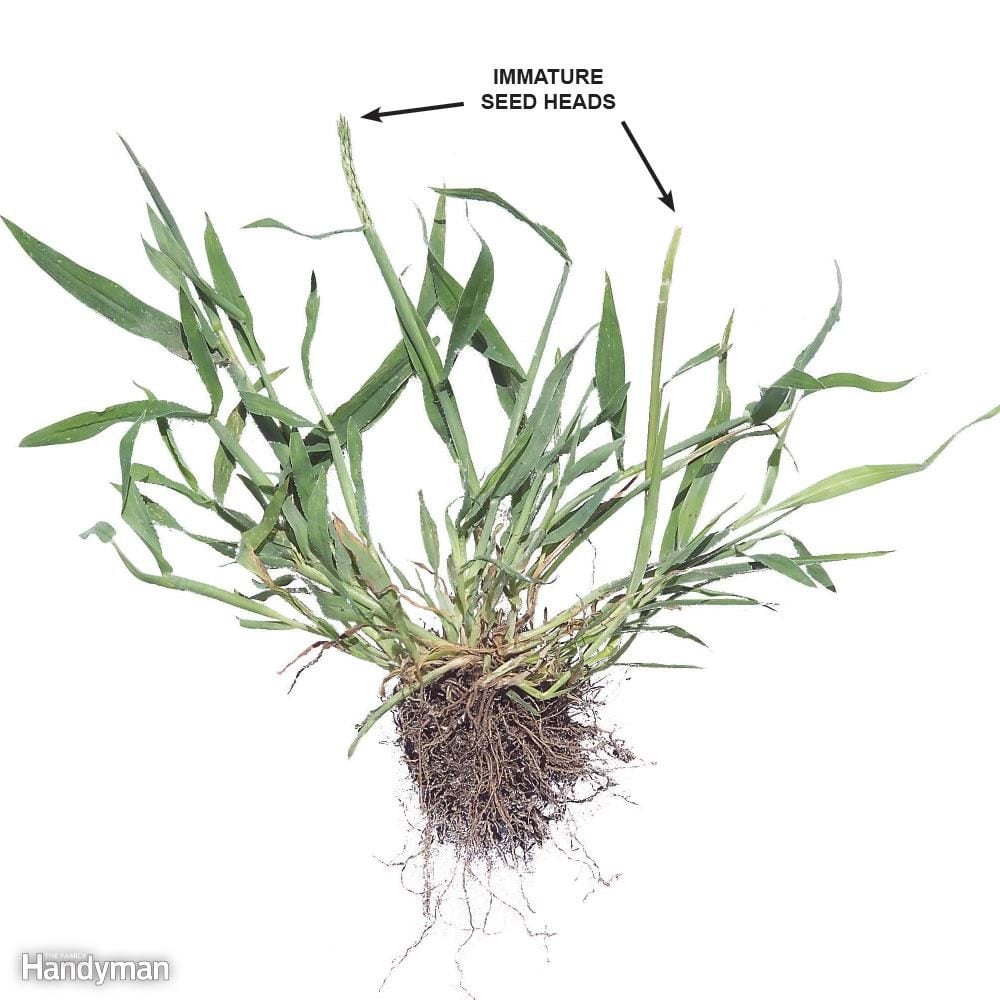
Immature seed heads
Immature crabgrass plants have tight, green seed heads. They're more difficult to remove, but it's still OK to pull them.
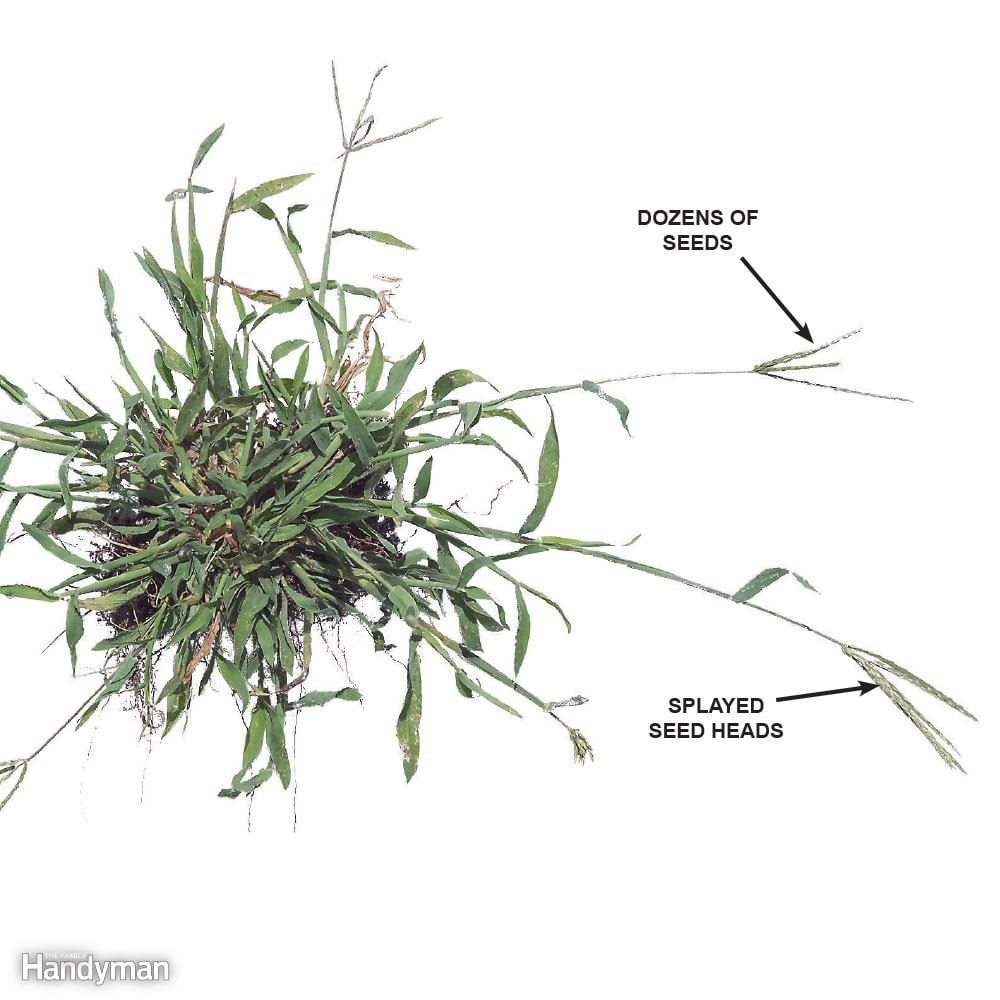
Mature seed heads
Fully mature crabgrass has splayed seed heads. It's best to leave it alone. Pulling will leave a big hole in the lawn and spread up to 5,000 seeds per plant. The plant will die in the fall. Then hit the area next spring with preemergence granules to keep the seeds from sprouting.
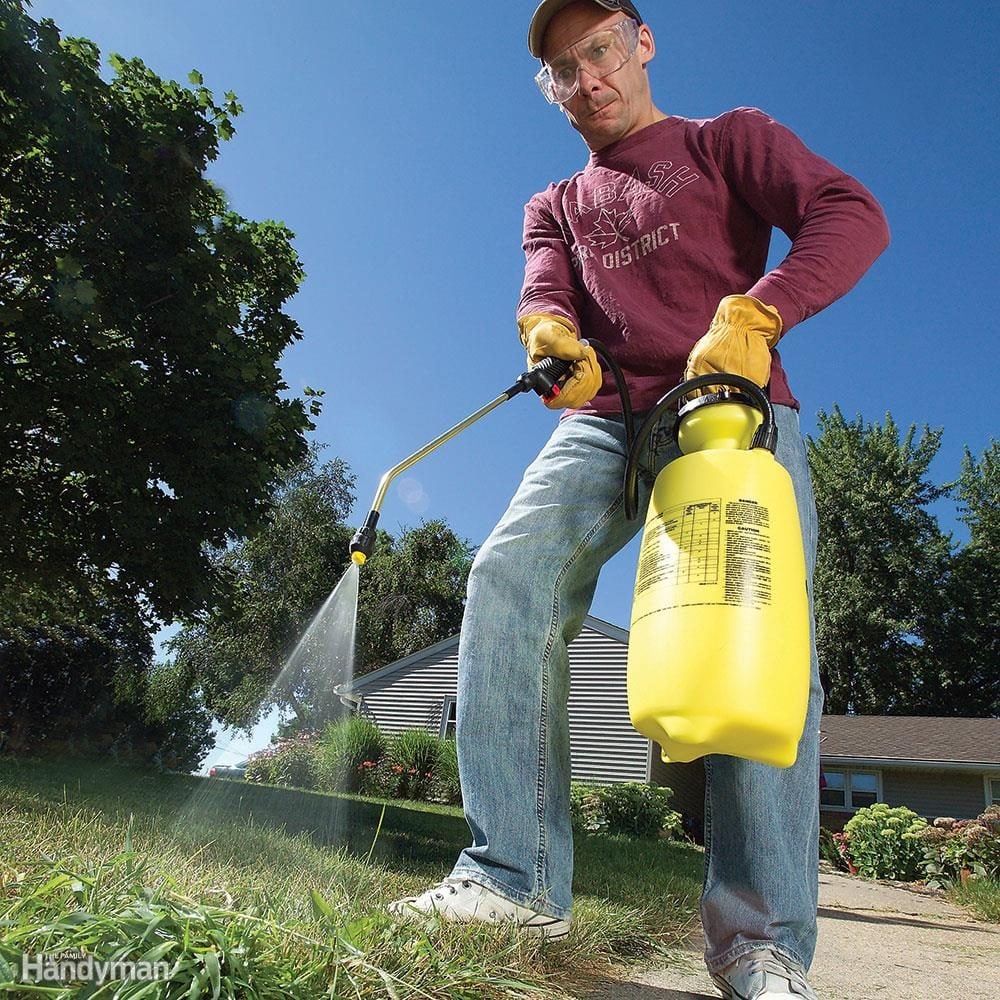
Spray stubborn patches
Lightly mist masses of immature crabgrass with a postemergence herbicide. Usually it's too embedded to pull without yanking lots of your desirable grass with it.
Spray postemergence herbicide directly on crabgrass after it has sprouted. Pulling is equally effective, but if the roots are deeply embedded in your lawn, it may be tough to pull them out without pulling grass chunks too. It's not worth spraying a postemergence product on crabgrass that has gone to seed. It takes about two weeks for the herbicide to work, which is about how long it takes the plant to finish its seeding process. If it has gone to seed, you're better off waiting for next spring and applying a preemergence product then.
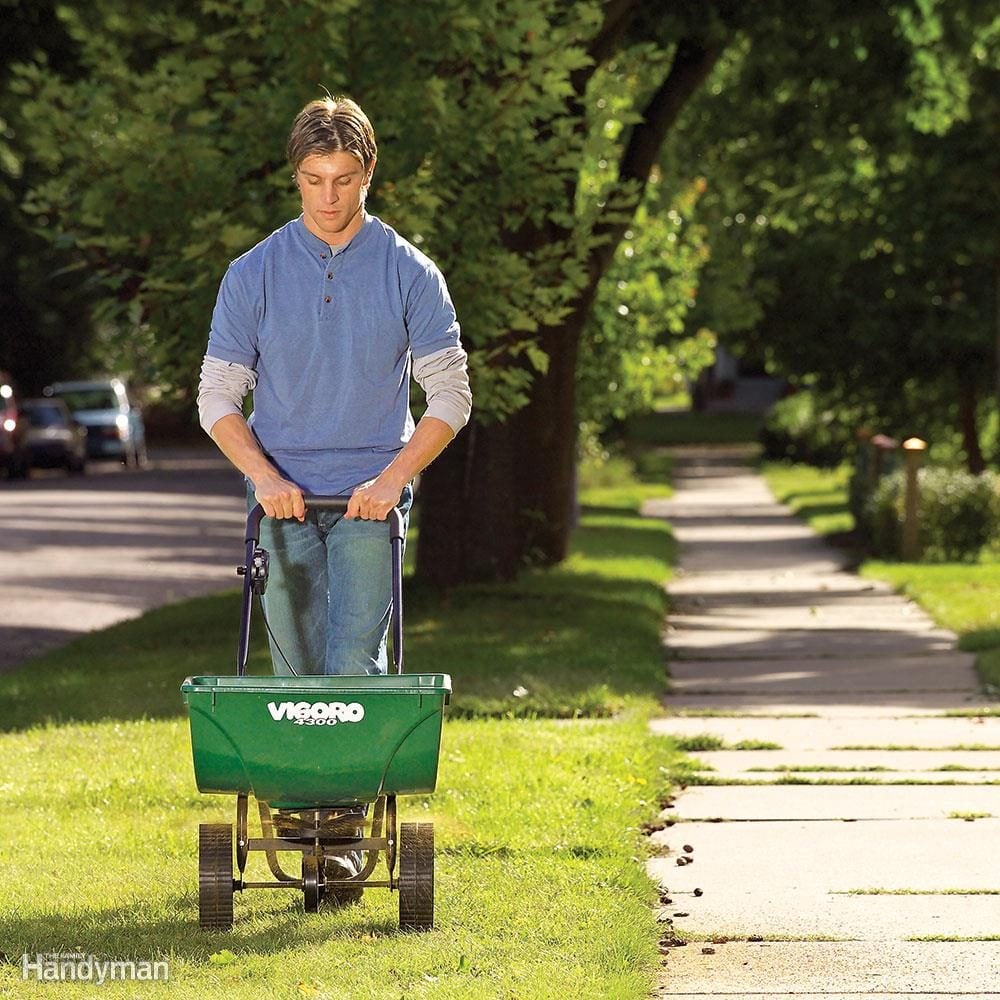
Apply a double dose near hot spots
Lawn near driveways, sidewalks and curbs or on south-facing banks absorbs a lot of heat during the summer months, which makes it more susceptible to crabgrass. Limit crabgrass growth in these areas by doing a targeted double treatment. After you've treated your entire lawn, go back and make another pass, about 6 to 8 ft. wide, along these areas (and make sure to sweep it off hard surfaces afterward). This will help keep crabgrass from taking hold along these heat absorbers.
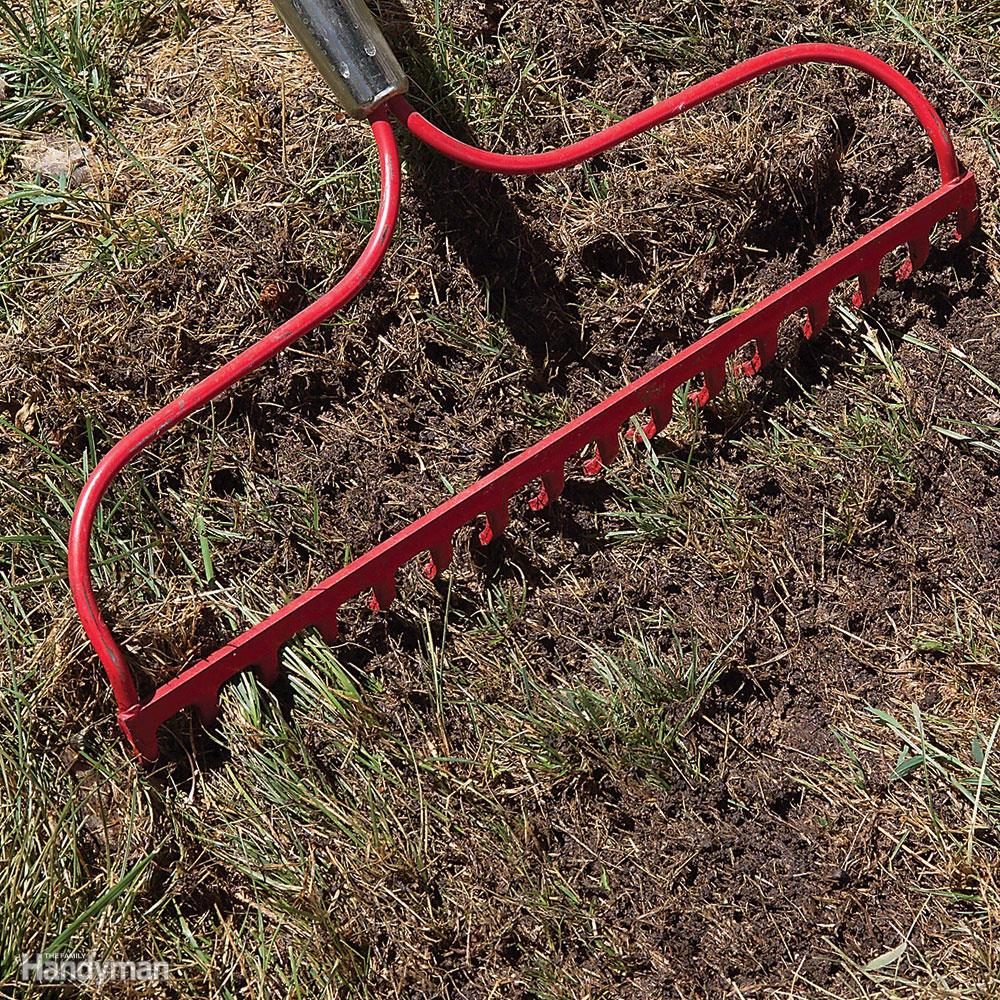
Kill it all and start over!
Expose bare soil
Kill off patches of lawn with nonselective herbicide in the fall if more than half the area is weeds. When it's safe to replant (check the herbicide label), soak the patch with water and rake off dead grass and thatch to bare the soil.
While we all admire those who relentlessly defend their turf against crabgrass, there comes a time when the best strategy is to give up. That time is when your lawn only has 30 to 40 percent desirable grass left in a given area and the rest is lost to crabgrass and other weeds.
Begin by killing all the vegetation. On a low-wind day, apply a nonselective herbicide that is approved for lawn use, like Round-Up or Kleen-Up. Follow the label directions exactly. Depending on the product, weeds and grass will die and dry up in five to 14 days following application. Then renovation can proceed.
Thoroughly soak the area to give your new grass its best chance for a good start. Check your watering depth by pushing a spade into the ground and pulling it back to get a deep view of the soil. If the soil is moist to a depth of 6 to 8 in., you're ready.
For patchy bare areas and turf-free areas up to about 8 ft. square, use the spade technique for seeding (Photo 2). It's very effective, although it would be slow and tedious on areas that are much larger. Scuff up the dead vegetation with a rake and, using a spade, make 1/4-in.-deep furrows about 2 in. apart. Broadcast your grass seed, then flip a rake upside down and knock the seeds into the furrows. These furrows ensure that the seeds will make good contact with soil; they provide some moisture-retaining shelter as well. Then be sure to keep the seeds and soil moist. Continue to baby your new grass until after its first mowing. Do not apply crabgrass preventer to freshly planted areas.
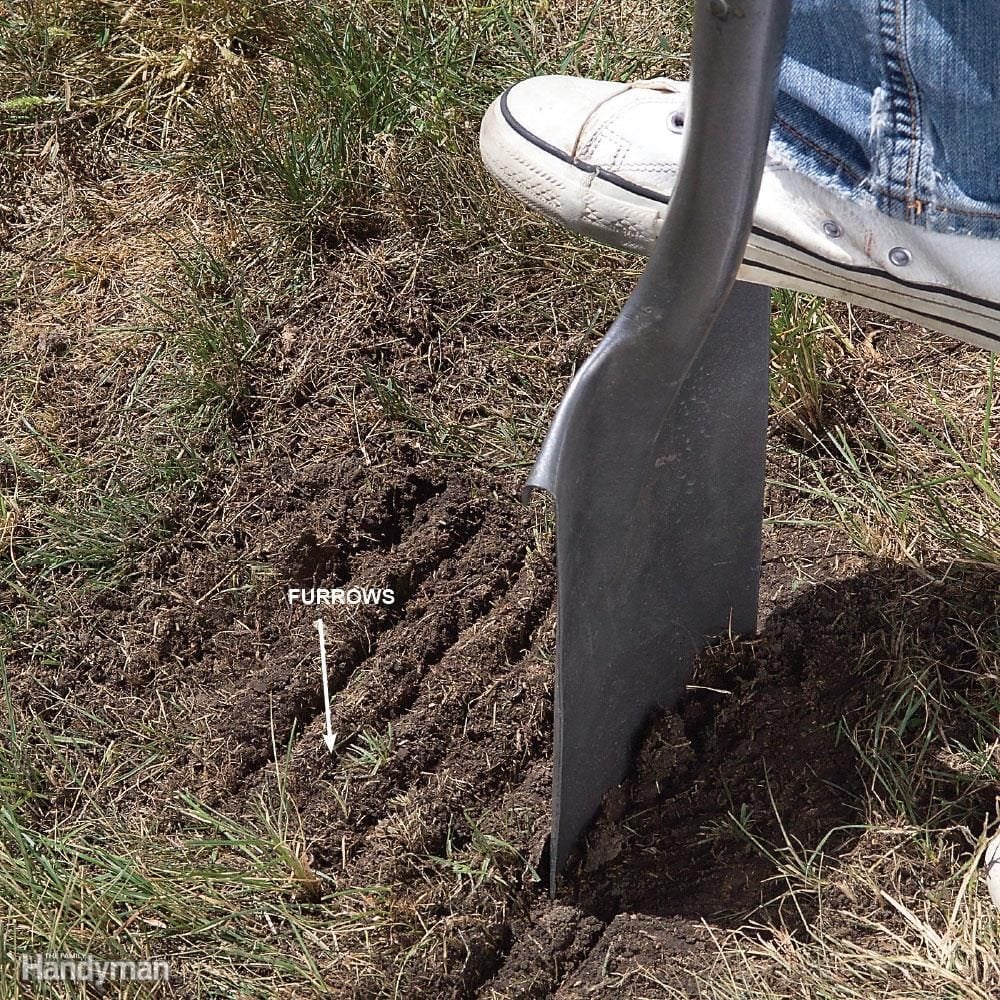
Furrow the dirt
Create 1/4-in.-deep furrows every 2 in. using a flat shovel. This will give your seeds a better chance to settle into the moist soil.
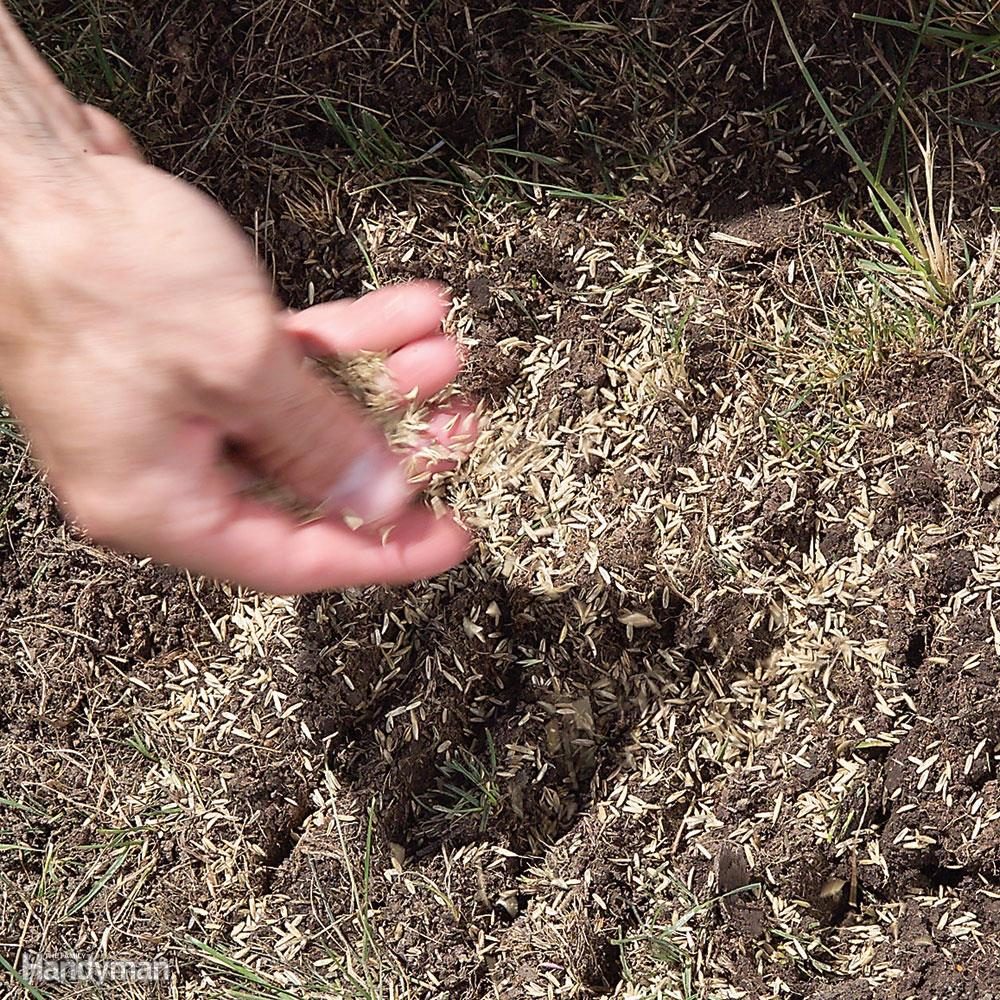
Seed
Toss grass seeds into the patch and keep the soil moist to the touch until the grass becomes established. Mow the new grass when it's 3-1/2 to 4 in. high.
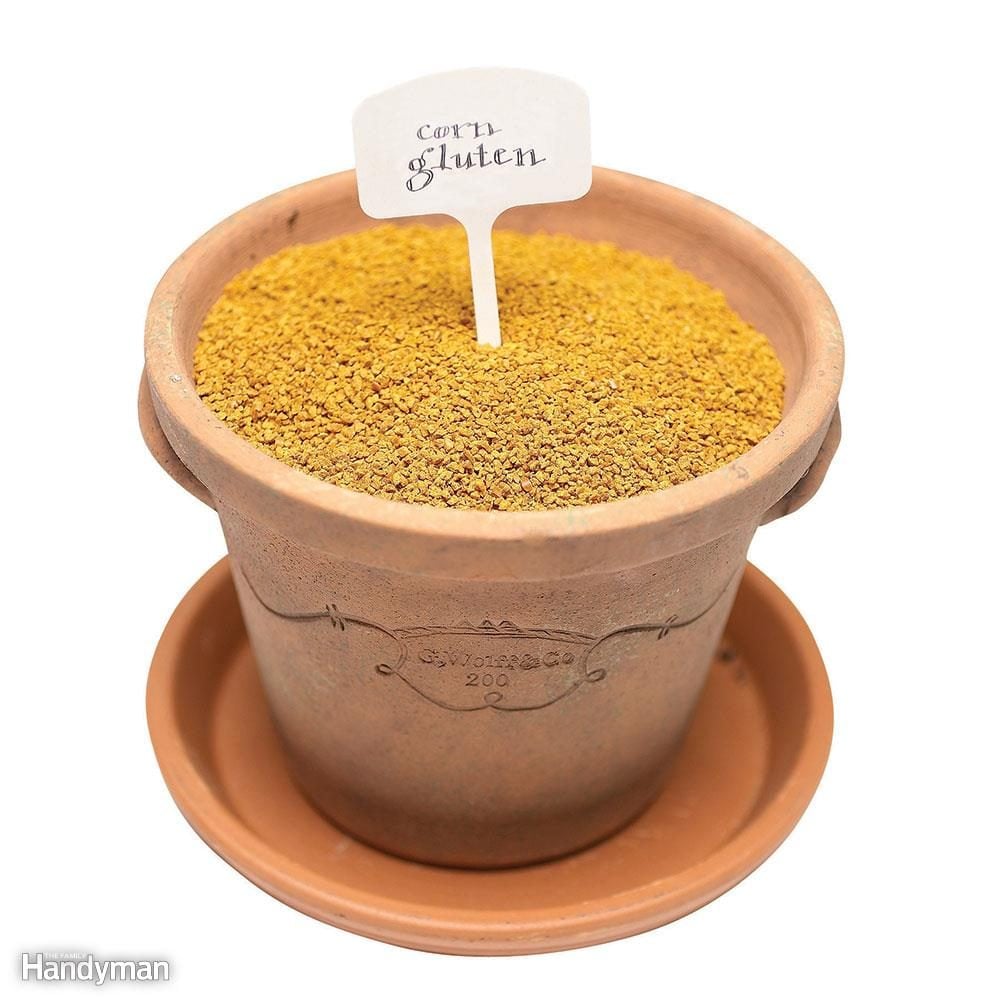
Consider Chemical-Free Control Methods
Preemergent herbicides are the most effective and economical way to control crabgrass. But if you'd rather not use herbicides, you can try hand-weeding individual crabgrass plants in late spring before they get too big. They pull easily in soft ground after a rain.
Corn gluten meal (CGM), a corn byproduct, is another method used to control both crabgrass and broadleaf weeds such as dandelions and clover. It releases a protein that slows the development of weed seedling roots. CGM requires a heavy application rate (20 lbs. per 1,000 sq. ft.), which makes it cumbersome to use and expensive. It costs about $30 for 25 lbs. at garden centers.